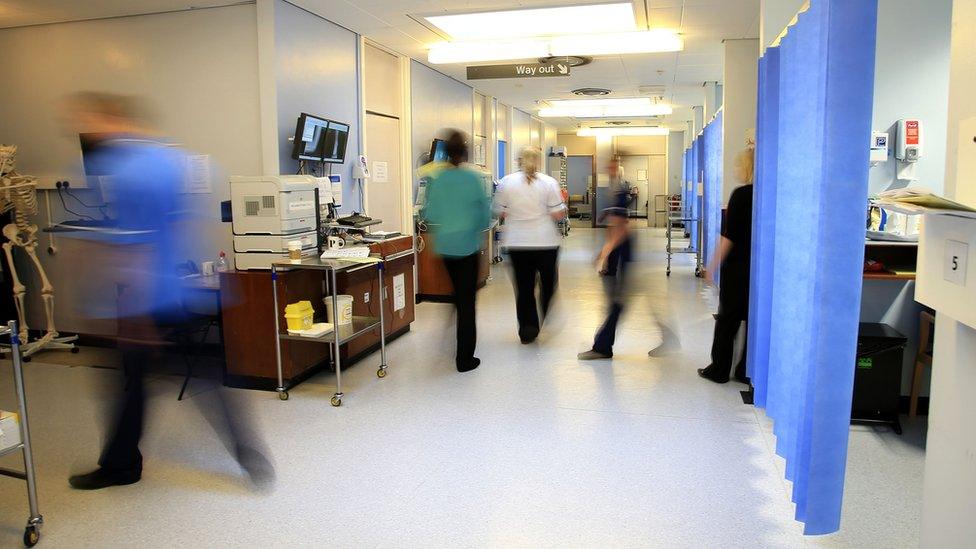NHS staffing levels lagging behind workload
- Published

If you are interested in the NHS workforce in England and how it's changing, there was a out on Wednesday.
Consultant numbers are up significantly over six years during which nurse numbers have barely increased - and all in the face of surging patient demand.
First, those nurse staffing levels.
According to the , there was an increase of just 1.1% over the six years to September 2015 with a total of 281,000 full-time equivalent posts for nurses and health visitors in England.
Contrast that with the increase in demand on the NHS.
Analysis by shows that referrals by GPs to hospital appointments were up 16% between 2009-10 and 2014-15.
Emergency admissions through A&E units were up 18% over that period.
While nurse and health visitor posts increasing only marginally, and with a drive to raise patient safety standards since the Mid-Staffordshire care scandal, there has been a surge in spending on agency staff as hospitals struggled to fill rotas.
Training nurses
Candace Imison of Nuffield Trust points out that the latest figures do not include agency nurses.
"Using the private sector to hire nurses in this way is estimated to have cost the NHS almost £1bn last year alone," she says.
"The premium paid for getting these staff from agencies will have contributed significantly to the £2.8bn collective deficit that we expect trusts to have at the end of the financial year."
Dame Donna Kinnair, of the Royal College of Nursing, said the "meagre" increase in vital nursing staff was hard to understand and argued that it reflected recruitment failures in earlier years.
"The government must commit to train and retain more nurses to ensure patients receive the care they deserve."
For its part, the government argues that more nurse training places are being created, with an increase of more than 15% between 2013-14 and 2016-17.
Critics, however, point out that a new system requiring trainees to borrow for their fees may deter new recruits.
A Department of Health spokesman said: "We are intensively supporting challenged trusts to improve finances, while clamping down on rip-off staffing agencies and helping hospitals become more efficient by sharing best practice across the service."
Upward trend?
Doctor numbers have risen faster than nurse staff numbers over the six years to 2015.
There are 4.2% more junior doctors and there has been an increase of 22.5% in the number of consultants.
This reflects a government decision more than a decade ago to recruit more senior clinicians.
The impact of this may now be tailing off with a small drop in junior doctor numbers in the year to September 2015.
And what of NHS managers?
Their number has fallen more than a fifth over the six-year period, reinforcing the argument of health service leaders that management away from the front line has become more efficient.
Curiously the management total did increase over the latest recorded year and the next set of figures will be scrutinised to see whether this was a blip or the start of a new upward trend.